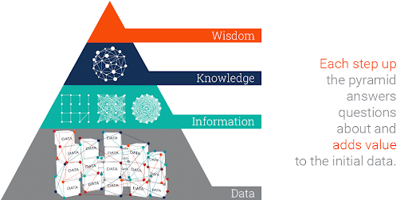By Harold S Geller, VP of Strategic Development, Advocado - An agency veteran driving industry relationships and spearheading new strategic partnerships.

Over the next few weeks, I plan to look at some themes around data, in particular the importance of clean data, what that means, and its application in advertising workflows and analytics. This week, I will introduce some overarching themes that I will dig into in the coming weeks.
The takeaways in the next few week’s columns will looks at some themes from my friend Scott Taylor’s book “Telling Your Data Story: Data Storytelling for Data Management.”
Ultimately, any discussion about data must start with the importance of raw data, and what the value of that data is as it becomes processed, matched with other data sets, and used to drive business decisions.

📊 1. Data is About Truth and Meaning
- Takeaway: It isn’t the chicken or egg here. It is an egg and omelet. Data is the primary ingredient for analytics. You have to determine the truth in your data before you can derive any meaning from analytics.
- Why it matters: Your data is likely your most important asset, massive amounts of data are being collected about consumers that drive both business and advertising decisions. When advertisers can figure out how to best utilize it, not only will they likely benefit financially, but consumers can benefit from better experiences.
📊 2. Excellent Data Management Enables Better Use of Time
- Takeaway: In a digitally-transformed organization, data moves seamlessly from workflow to workflow and between external partners. Users can spend their time improving their relationship experience rather than questioning the data. At its essence, every business wants to deliver value to their relationships through its brands at scale.
- Why it matters: When entities take the time to make sure data is centralized, standardized, and available for all the necessary purposes, questions can be asked that surface areas where it needs to be supplemented by additional data points and strategic data relationships, which drive business results.
📊 3. Standards Are at the Center of Data Management
- Takeaway: Let’s get everyone “on the same page” by having business data and its organization in software systems governed by standards that enable a consistent method for data entry and reporting accuracy. This has never been more important to enterprises.
- Why it matters: Companies do not live on data islands, they need data from other business partners, and syndicated sources to drive successful best of breed partnerships, which underpin decision making. Standardization not only allows your data to be more internally consistent, but enables multiple internal and external datasets to be easily integrated for increased insights.
📊 4. Data Management is the Key to Interoperability
 Diagram from: Urs Gasser, Interoperability in the digital ecosystem, International Telecommunication Union (ITU) 2016
Diagram from: Urs Gasser, Interoperability in the digital ecosystem, International Telecommunication Union (ITU) 2016
- Takeaway: Standardized, expertly-governed master, reference, and metadata content can seamlessly integrate internally across methodologies, processes, workflows, apps, and platforms, as well as externally between enterprises, value chains, and throughout market ecosystems. Think of it as a common language for customers, vendors, partners, prospects, brands, products, services, assets, and offerings.
- Why it matters: We will explore interoperability, more in coming posts. Interoperability is not just about the flow of data or about technology; it involves essential questions of human and institutional interaction as well. The problems associated with Interoperability are just as much about culture as they are about technology.
📊 5. We Are in the 4th Industrial Revolution
- Takeaway: The promise of the 4th Industrial Revolution is based on machines and devices “talking” to other machines and devices. That process is “I have to find something, determine if I can trust it, and then connect to it.” The ideal response is, “I have what you need to find, you can trust me, and here’s how to connect.
- Why it matters: The application of Artificial Intelligence (AI) and machine learning (ML) can improve consumer experiences transform the research process, and enable new data modeling capabilities. Without excellent curation and management attention, everyone suffers from Garbage In, Garbage out syndrome.